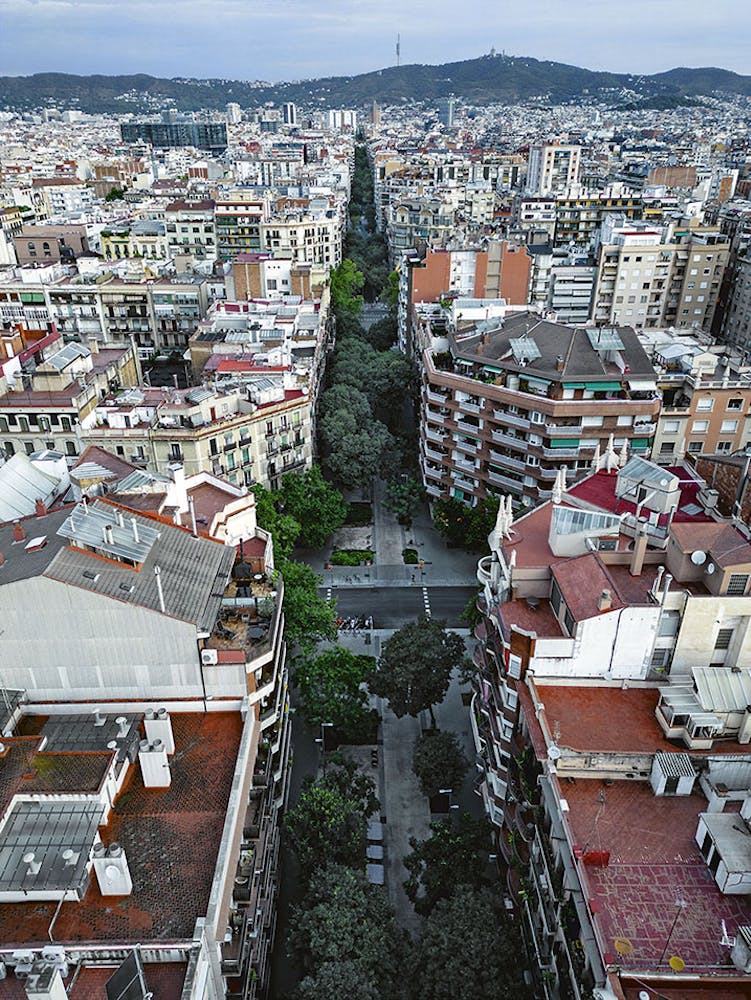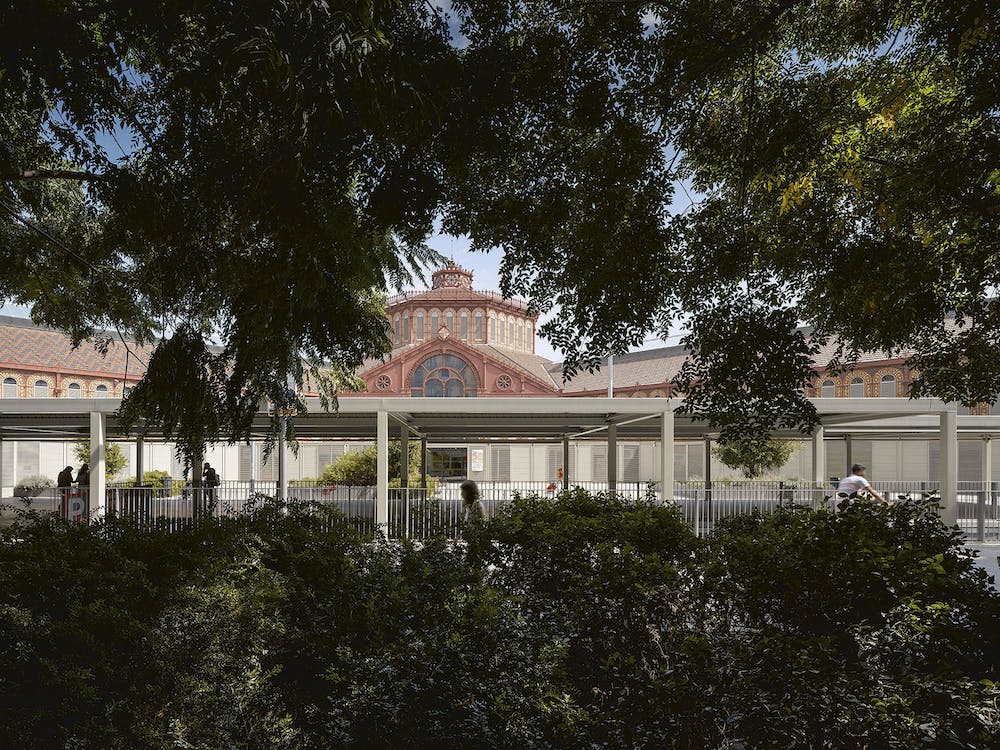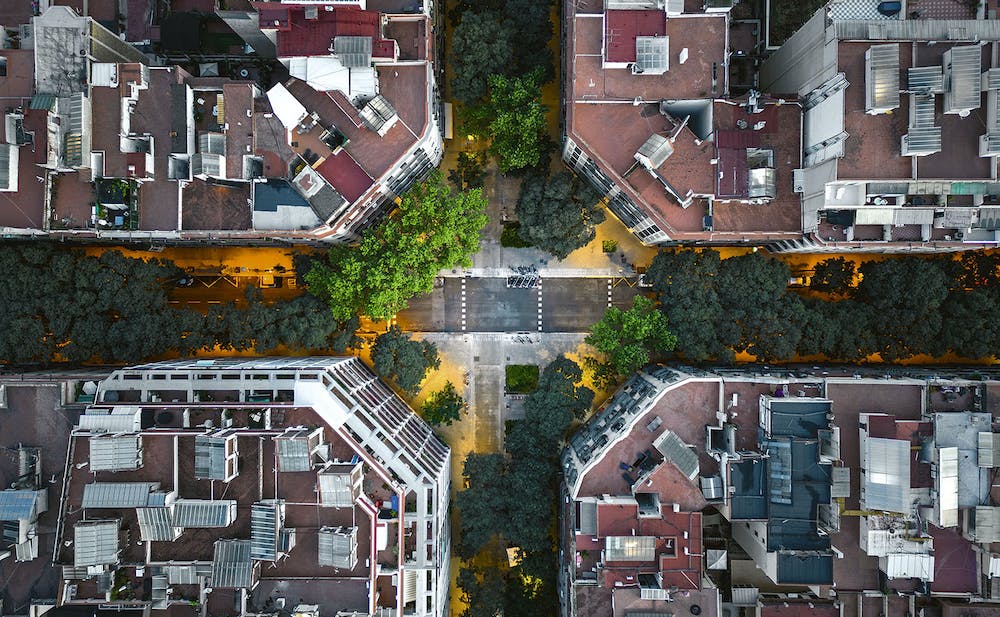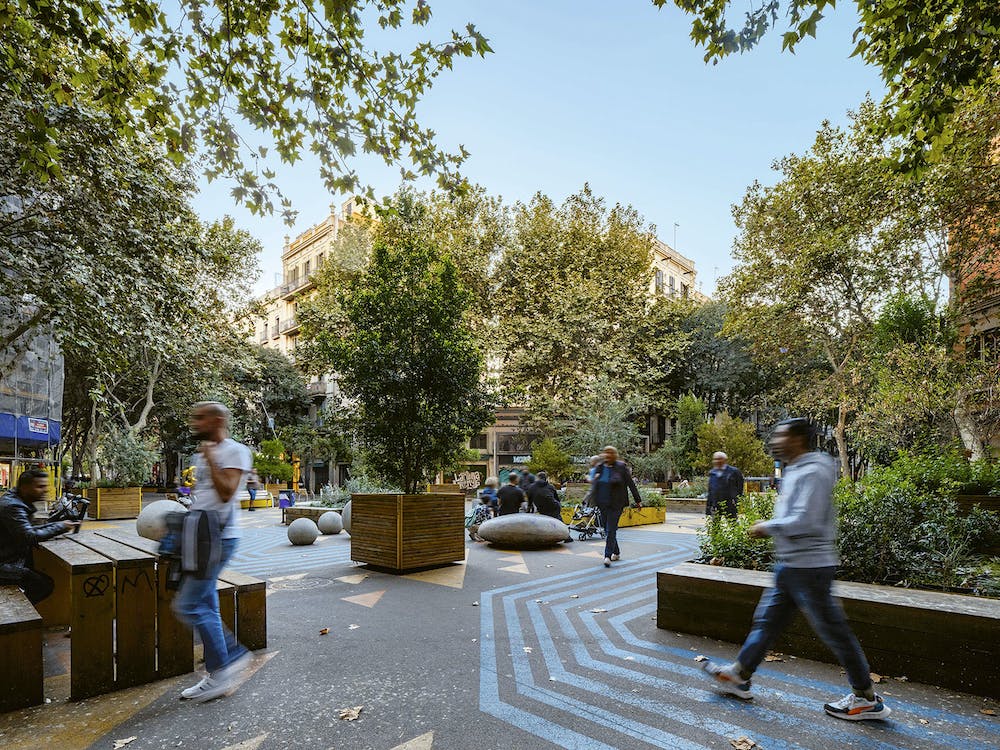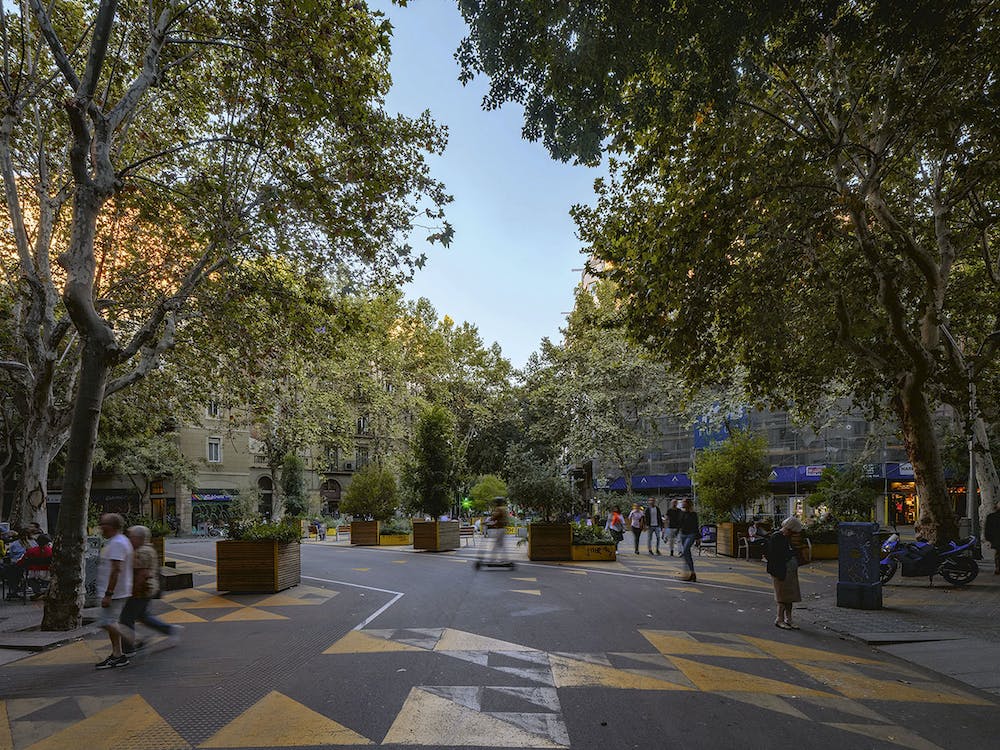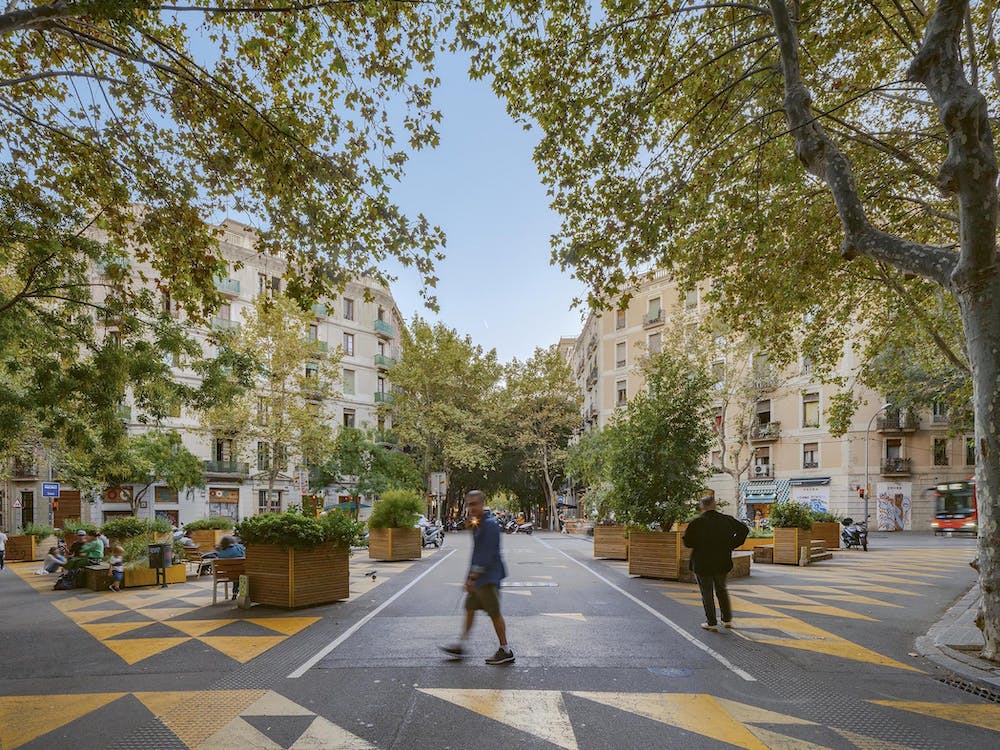Loading
[{"image":{"large":{"url":"https://images.prismic.io/surveybcn/afu_superilla-sant-antoni_03_429.jpg?auto=compress,format&rect=0,0,1434,955&w=1434&h=955","localUrl":"/surveyfotografic/common/images/afu_superilla-sant-antoni_03_429.jpg","width":1434,"height":955},"scaled":{"url":"https://images.prismic.io/surveybcn/afu_superilla-sant-antoni_03_429.jpg?auto=compress,format&rect=0,0,1434,955&w=1000&h=666","localUrl":"/surveyfotografic/common/images/afu_superilla-sant-antoni_03_429_s.jpg","width":1000,"height":666}},"gaze":{"meta":{"url":"/surveyfotografic/en/gaze/usos"},"body":{"name":"The uses","photographer":{"name":"Andrés Flajszer","url":"/surveyfotografic/en/biographies#andres-flajszer","colorClass":"biographies-cl-andres-flajszer"}}}},{"image":{"large":{"url":"https://images.prismic.io/surveybcn/srv_superilla_sant_antoni_454.jpg?auto=compress,format&rect=0,0,637,955&w=637&h=955","localUrl":"/surveyfotografic/common/images/srv_superilla_sant_antoni_454.jpg","width":637,"height":955},"scaled":{"url":"https://images.prismic.io/surveybcn/srv_superilla_sant_antoni_454.jpg?auto=compress,format&rect=0,0,637,955&w=667&h=1000","localUrl":"/surveyfotografic/common/images/srv_superilla_sant_antoni_454_s.jpg","width":667,"height":1000}},"gaze":{"meta":{"url":"/surveyfotografic/en/gaze/vegetacio"},"body":{"name":"The vegetation","photographer":{"name":"Simona Rota","url":"/surveyfotografic/en/biographies#simona-rota","colorClass":"biographies-cl-simona-rota"}}}},{"image":{"large":{"url":"https://images.prismic.io/surveybcn/afu_superilla-sant-antoni_02_428.jpg?auto=compress,format&rect=0,0,1342,1194&w=1342&h=1194","localUrl":"/surveyfotografic/common/images/afu_superilla-sant-antoni_02_428.jpg","width":1342,"height":1194},"scaled":{"url":"https://images.prismic.io/surveybcn/afu_superilla-sant-antoni_02_428.jpg?auto=compress,format&rect=0,0,1342,1194&w=1000&h=890","localUrl":"/surveyfotografic/common/images/afu_superilla-sant-antoni_02_428_s.jpg","width":1000,"height":890}},"gaze":{"meta":{"url":"/surveyfotografic/en/gaze/usos"},"body":{"name":"The uses","photographer":{"name":"Andrés Flajszer","url":"/surveyfotografic/en/biographies#andres-flajszer","colorClass":"biographies-cl-andres-flajszer"}}}},{"image":{"large":{"url":"https://images.prismic.io/surveybcn/afu_superilla-sant-antoni_04_430.jpg?auto=compress,format&rect=0,0,1792,1194&w=1792&h=1194","localUrl":"/surveyfotografic/common/images/afu_superilla-sant-antoni_04_430.jpg","width":1792,"height":1194},"scaled":{"url":"https://images.prismic.io/surveybcn/afu_superilla-sant-antoni_04_430.jpg?auto=compress,format&rect=0,0,1792,1193&w=1000&h=666","localUrl":"/surveyfotografic/common/images/afu_superilla-sant-antoni_04_430_s.jpg","width":1000,"height":666}},"gaze":{"meta":{"url":"/surveyfotografic/en/gaze/usos"},"body":{"name":"The uses","photographer":{"name":"Andrés Flajszer","url":"/surveyfotografic/en/biographies#andres-flajszer","colorClass":"biographies-cl-andres-flajszer"}}}},{"image":{"large":{"url":"https://images.prismic.io/surveybcn/jta_superilla_sant_antoni_434.jpg?auto=compress,format&rect=0,0,717,955&w=717&h=955","localUrl":"/surveyfotografic/common/images/jta_superilla_sant_antoni_434.jpg","width":717,"height":955},"scaled":{"url":"https://images.prismic.io/surveybcn/jta_superilla_sant_antoni_434.jpg?auto=compress,format&rect=0,0,717,955&w=751&h=1000","localUrl":"/surveyfotografic/common/images/jta_superilla_sant_antoni_434_s.jpg","width":751,"height":1000}},"gaze":{"meta":{"url":"/surveyfotografic/en/gaze/aire"},"body":{"name":"The air","photographer":{"name":"Jon Tugores","url":"/surveyfotografic/en/biographies#jon-tugores","colorClass":"biographies-cl-jon-tugores"}}}},{"image":{"large":{"url":"https://images.prismic.io/surveybcn/aen_superilla_sant_antoni_03_424.jpg?auto=compress,format&rect=0,0,1195,955&w=1195&h=955","localUrl":"/surveyfotografic/common/images/aen_superilla_sant_antoni_03_424.jpg","width":1195,"height":955},"scaled":{"url":"https://images.prismic.io/surveybcn/aen_superilla_sant_antoni_03_424.jpg?auto=compress,format&rect=0,0,1195,955&w=1000&h=799","localUrl":"/surveyfotografic/common/images/aen_superilla_sant_antoni_03_424_s.jpg","width":1000,"height":799}},"gaze":{"meta":{"url":"/surveyfotografic/en/gaze/nit"},"body":{"name":"The night","photographer":{"name":"Aitor Estévez","url":"/surveyfotografic/en/biographies#aitor-estevez","colorClass":"biographies-cl-aitor-estevez"}}}},{"image":{"large":{"url":"https://images.prismic.io/surveybcn/afu_superilla-sant-antoni_427.jpg?auto=compress,format&rect=0,0,1792,1194&w=1792&h=1194","localUrl":"/surveyfotografic/common/images/afu_superilla-sant-antoni_427.jpg","width":1792,"height":1194},"scaled":{"url":"https://images.prismic.io/surveybcn/afu_superilla-sant-antoni_427.jpg?auto=compress,format&rect=0,0,1792,1193&w=1000&h=666","localUrl":"/surveyfotografic/common/images/afu_superilla-sant-antoni_427_s.jpg","width":1000,"height":666}},"gaze":{"meta":{"url":"/surveyfotografic/en/gaze/usos"},"body":{"name":"The uses","photographer":{"name":"Andrés Flajszer","url":"/surveyfotografic/en/biographies#andres-flajszer","colorClass":"biographies-cl-andres-flajszer"}}}},{"image":{"large":{"url":"https://images.prismic.io/surveybcn/pps_superilla_sant_antoni_05_449.jpg?auto=compress,format&rect=0,0,1593,1194&w=1593&h=1194","localUrl":"/surveyfotografic/common/images/pps_superilla_sant_antoni_05_449.jpg","width":1593,"height":1194},"scaled":{"url":"https://images.prismic.io/surveybcn/pps_superilla_sant_antoni_05_449.jpg?auto=compress,format&rect=0,0,1592,1194&w=1000&h=750","localUrl":"/surveyfotografic/common/images/pps_superilla_sant_antoni_05_449_s.jpg","width":1000,"height":750}},"gaze":{"meta":{"url":"/surveyfotografic/en/gaze/superficie"},"body":{"name":"The surface","photographer":{"name":"Pedro Pegenaute","url":"/surveyfotografic/en/biographies#pedro-pegenaute","colorClass":"biographies-cl-pedro-pegenaute"}}}},{"image":{"large":{"url":"https://images.prismic.io/surveybcn/jta_superilla_sant_antoni_05_439.jpg?auto=compress,format&rect=0,0,1549,955&w=1549&h=955","localUrl":"/surveyfotografic/common/images/jta_superilla_sant_antoni_05_439.jpg","width":1549,"height":955},"scaled":{"url":"https://images.prismic.io/surveybcn/jta_superilla_sant_antoni_05_439.jpg?auto=compress,format&rect=0,0,1548,955&w=1000&h=617","localUrl":"/surveyfotografic/common/images/jta_superilla_sant_antoni_05_439_s.jpg","width":1000,"height":617}},"gaze":{"meta":{"url":"/surveyfotografic/en/gaze/aire"},"body":{"name":"The air","photographer":{"name":"Jon Tugores","url":"/surveyfotografic/en/biographies#jon-tugores","colorClass":"biographies-cl-jon-tugores"}}}},{"image":{"large":{"url":"https://images.prismic.io/surveybcn/aen_superilla_sant_antoni_02_423.jpg?auto=compress,format&rect=0,0,1195,955&w=1195&h=955","localUrl":"/surveyfotografic/common/images/aen_superilla_sant_antoni_02_423.jpg","width":1195,"height":955},"scaled":{"url":"https://images.prismic.io/surveybcn/aen_superilla_sant_antoni_02_423.jpg?auto=compress,format&rect=0,0,1195,955&w=1000&h=799","localUrl":"/surveyfotografic/common/images/aen_superilla_sant_antoni_02_423_s.jpg","width":1000,"height":799}},"gaze":{"meta":{"url":"/surveyfotografic/en/gaze/nit"},"body":{"name":"The night","photographer":{"name":"Aitor Estévez","url":"/surveyfotografic/en/biographies#aitor-estevez","colorClass":"biographies-cl-aitor-estevez"}}}},{"image":{"large":{"url":"https://images.prismic.io/surveybcn/pps_superilla_sant_antoni_02_441.jpg?auto=compress,format&rect=0,0,2097,1573&w=2097&h=1573","localUrl":"/surveyfotografic/common/images/pps_superilla_sant_antoni_02_441.jpg","width":2097,"height":1573},"scaled":{"url":"https://images.prismic.io/surveybcn/pps_superilla_sant_antoni_02_441.jpg?auto=compress,format&rect=0,0,2097,1573&w=1000&h=750","localUrl":"/surveyfotografic/common/images/pps_superilla_sant_antoni_02_441_s.jpg","width":1000,"height":750}},"gaze":{"meta":{"url":"/surveyfotografic/en/gaze/superficie"},"body":{"name":"The surface","photographer":{"name":"Pedro Pegenaute","url":"/surveyfotografic/en/biographies#pedro-pegenaute","colorClass":"biographies-cl-pedro-pegenaute"}}}},{"image":{"large":{"url":"https://images.prismic.io/surveybcn/pps_superilla_sant_antoni_02_446.jpg?auto=compress,format&rect=0,0,1593,1194&w=1593&h=1194","localUrl":"/surveyfotografic/common/images/pps_superilla_sant_antoni_02_446.jpg","width":1593,"height":1194},"scaled":{"url":"https://images.prismic.io/surveybcn/pps_superilla_sant_antoni_02_446.jpg?auto=compress,format&rect=0,0,1592,1194&w=1000&h=750","localUrl":"/surveyfotografic/common/images/pps_superilla_sant_antoni_02_446_s.jpg","width":1000,"height":750}},"gaze":{"meta":{"url":"/surveyfotografic/en/gaze/superficie"},"body":{"name":"The surface","photographer":{"name":"Pedro Pegenaute","url":"/surveyfotografic/en/biographies#pedro-pegenaute","colorClass":"biographies-cl-pedro-pegenaute"}}}},{"image":{"large":{"url":"https://images.prismic.io/surveybcn/39b50640-8193-4b6d-886f-72f3380b3376_SI02+SRV+Sant+Antoni_02.jpg?auto=compress,format&rect=0,0,1434,955&w=1434&h=955","localUrl":"/surveyfotografic/common/images/39b50640-8193-4b6d-886f-72f3380b3376_SI02+SRV+Sant+Antoni_02.jpg","width":1434,"height":955},"scaled":{"url":"https://images.prismic.io/surveybcn/39b50640-8193-4b6d-886f-72f3380b3376_SI02+SRV+Sant+Antoni_02.jpg?auto=compress,format&rect=0,0,1434,955&w=1000&h=666","localUrl":"/surveyfotografic/common/images/39b50640-8193-4b6d-886f-72f3380b3376_SI02+SRV+Sant+Antoni_02_s.jpg","width":1000,"height":666}},"gaze":{"meta":{"url":"/surveyfotografic/en/gaze/vegetacio"},"body":{"name":"The vegetation","photographer":{"name":"Simona Rota","url":"/surveyfotografic/en/biographies#simona-rota","colorClass":"biographies-cl-simona-rota"}}}},{"image":{"large":{"url":"https://images.prismic.io/surveybcn/pps_superilla_sant_antoni_440.jpg?auto=compress,format&rect=0,0,2097,1573&w=2097&h=1573","localUrl":"/surveyfotografic/common/images/pps_superilla_sant_antoni_440.jpg","width":2097,"height":1573},"scaled":{"url":"https://images.prismic.io/surveybcn/pps_superilla_sant_antoni_440.jpg?auto=compress,format&rect=0,0,2097,1573&w=1000&h=750","localUrl":"/surveyfotografic/common/images/pps_superilla_sant_antoni_440_s.jpg","width":1000,"height":750}},"gaze":{"meta":{"url":"/surveyfotografic/en/gaze/superficie"},"body":{"name":"The surface","photographer":{"name":"Pedro Pegenaute","url":"/surveyfotografic/en/biographies#pedro-pegenaute","colorClass":"biographies-cl-pedro-pegenaute"}}}},{"image":{"large":{"url":"https://images.prismic.io/surveybcn/aen_superilla_sant_antoni_2_420.jpg?auto=compress,format&rect=0,0,1350,1080&w=1350&h=1080","localUrl":"/surveyfotografic/common/images/aen_superilla_sant_antoni_2_420.jpg","width":1350,"height":1080},"scaled":{"url":"https://images.prismic.io/surveybcn/aen_superilla_sant_antoni_2_420.jpg?auto=compress,format&rect=0,0,1350,1080&w=1000&h=800","localUrl":"/surveyfotografic/common/images/aen_superilla_sant_antoni_2_420_s.jpg","width":1000,"height":800}},"gaze":{"meta":{"url":"/surveyfotografic/en/gaze/nit"},"body":{"name":"The night","photographer":{"name":"Aitor Estévez","url":"/surveyfotografic/en/biographies#aitor-estevez","colorClass":"biographies-cl-aitor-estevez"}}}},{"image":{"large":{"url":"https://images.prismic.io/surveybcn/aen_superilla_sant_antoni_422.jpg?auto=compress,format&rect=0,0,955,955&w=955&h=955","localUrl":"/surveyfotografic/common/images/aen_superilla_sant_antoni_422.jpg","width":955,"height":955},"scaled":{"url":"https://images.prismic.io/surveybcn/aen_superilla_sant_antoni_422.jpg?auto=compress,format&rect=0,0,955,955&w=1000&h=1000","localUrl":"/surveyfotografic/common/images/aen_superilla_sant_antoni_422_s.jpg","width":1000,"height":1000}},"gaze":{"meta":{"url":"/surveyfotografic/en/gaze/nit"},"body":{"name":"The night","photographer":{"name":"Aitor Estévez","url":"/surveyfotografic/en/biographies#aitor-estevez","colorClass":"biographies-cl-aitor-estevez"}}}},{"image":{"large":{"url":"https://images.prismic.io/surveybcn/aen_superilla_sant_antoni_419.jpg?auto=compress,format&rect=0,0,1375,1375&w=1375&h=1375","localUrl":"/surveyfotografic/common/images/aen_superilla_sant_antoni_419.jpg","width":1375,"height":1375},"scaled":{"url":"https://images.prismic.io/surveybcn/aen_superilla_sant_antoni_419.jpg?auto=compress,format&rect=0,0,1375,1375&w=1000&h=1000","localUrl":"/surveyfotografic/common/images/aen_superilla_sant_antoni_419_s.jpg","width":1000,"height":1000}},"gaze":{"meta":{"url":"/surveyfotografic/en/gaze/nit"},"body":{"name":"The night","photographer":{"name":"Aitor Estévez","url":"/surveyfotografic/en/biographies#aitor-estevez","colorClass":"biographies-cl-aitor-estevez"}}}},{"image":{"large":{"url":"https://images.prismic.io/surveybcn/aen_superilla_sant_antoni_3_421.jpg?auto=compress,format&rect=0,0,1422,1138&w=1422&h=1138","localUrl":"/surveyfotografic/common/images/aen_superilla_sant_antoni_3_421.jpg","width":1422,"height":1138},"scaled":{"url":"https://images.prismic.io/surveybcn/aen_superilla_sant_antoni_3_421.jpg?auto=compress,format&rect=0,0,1422,1138&w=1000&h=800","localUrl":"/surveyfotografic/common/images/aen_superilla_sant_antoni_3_421_s.jpg","width":1000,"height":800}},"gaze":{"meta":{"url":"/surveyfotografic/en/gaze/nit"},"body":{"name":"The night","photographer":{"name":"Aitor Estévez","url":"/surveyfotografic/en/biographies#aitor-estevez","colorClass":"biographies-cl-aitor-estevez"}}}},{"image":{"large":{"url":"https://images.prismic.io/surveybcn/afu_superilla_sant_antoni_02_426.jpg?auto=compress,format&rect=0,0,1075,1613&w=1075&h=1613","localUrl":"/surveyfotografic/common/images/afu_superilla_sant_antoni_02_426.jpg","width":1075,"height":1613},"scaled":{"url":"https://images.prismic.io/surveybcn/afu_superilla_sant_antoni_02_426.jpg?auto=compress,format&rect=0,0,1074,1613&w=666&h=1000","localUrl":"/surveyfotografic/common/images/afu_superilla_sant_antoni_02_426_s.jpg","width":666,"height":1000}},"gaze":{"meta":{"url":"/surveyfotografic/en/gaze/usos"},"body":{"name":"The uses","photographer":{"name":"Andrés Flajszer","url":"/surveyfotografic/en/biographies#andres-flajszer","colorClass":"biographies-cl-andres-flajszer"}}}},{"image":{"large":{"url":"https://images.prismic.io/surveybcn/afu_superilla_sant_antoni_425.jpg?auto=compress,format&rect=0,0,1567,1044&w=1567&h=1044","localUrl":"/surveyfotografic/common/images/afu_superilla_sant_antoni_425.jpg","width":1567,"height":1044},"scaled":{"url":"https://images.prismic.io/surveybcn/afu_superilla_sant_antoni_425.jpg?auto=compress,format&rect=0,0,1567,1044&w=1000&h=666","localUrl":"/surveyfotografic/common/images/afu_superilla_sant_antoni_425_s.jpg","width":1000,"height":666}},"gaze":{"meta":{"url":"/surveyfotografic/en/gaze/usos"},"body":{"name":"The uses","photographer":{"name":"Andrés Flajszer","url":"/surveyfotografic/en/biographies#andres-flajszer","colorClass":"biographies-cl-andres-flajszer"}}}},{"image":{"large":{"url":"https://images.prismic.io/surveybcn/jta_superilla_sant_antoni_431.jpg?auto=compress,format&rect=0,0,955,712&w=955&h=712","localUrl":"/surveyfotografic/common/images/jta_superilla_sant_antoni_431.jpg","width":955,"height":712},"scaled":{"url":"https://images.prismic.io/surveybcn/jta_superilla_sant_antoni_431.jpg?auto=compress,format&rect=0,0,954,712&w=1000&h=746","localUrl":"/surveyfotografic/common/images/jta_superilla_sant_antoni_431_s.jpg","width":1000,"height":746}},"gaze":{"meta":{"url":"/surveyfotografic/en/gaze/aire"},"body":{"name":"The air","photographer":{"name":"Jon Tugores","url":"/surveyfotografic/en/biographies#jon-tugores","colorClass":"biographies-cl-jon-tugores"}}}},{"image":{"large":{"url":"https://images.prismic.io/surveybcn/jta_superilla_sant_antoni_02_432.jpg?auto=compress,format&rect=0,0,934,701&w=934&h=701","localUrl":"/surveyfotografic/common/images/jta_superilla_sant_antoni_02_432.jpg","width":934,"height":701},"scaled":{"url":"https://images.prismic.io/surveybcn/jta_superilla_sant_antoni_02_432.jpg?auto=compress,format&rect=0,0,933,701&w=1000&h=751","localUrl":"/surveyfotografic/common/images/jta_superilla_sant_antoni_02_432_s.jpg","width":1000,"height":751}},"gaze":{"meta":{"url":"/surveyfotografic/en/gaze/aire"},"body":{"name":"The air","photographer":{"name":"Jon Tugores","url":"/surveyfotografic/en/biographies#jon-tugores","colorClass":"biographies-cl-jon-tugores"}}}},{"image":{"large":{"url":"https://images.prismic.io/surveybcn/jta_superilla_sant_antoni_03_433.jpg?auto=compress,format&rect=0,0,962,722&w=962&h=722","localUrl":"/surveyfotografic/common/images/jta_superilla_sant_antoni_03_433.jpg","width":962,"height":722},"scaled":{"url":"https://images.prismic.io/surveybcn/jta_superilla_sant_antoni_03_433.jpg?auto=compress,format&rect=0,0,961,722&w=1000&h=751","localUrl":"/surveyfotografic/common/images/jta_superilla_sant_antoni_03_433_s.jpg","width":1000,"height":751}},"gaze":{"meta":{"url":"/surveyfotografic/en/gaze/aire"},"body":{"name":"The air","photographer":{"name":"Jon Tugores","url":"/surveyfotografic/en/biographies#jon-tugores","colorClass":"biographies-cl-jon-tugores"}}}},{"image":{"large":{"url":"https://images.prismic.io/surveybcn/jta_superilla_sant_antoni_04_438.jpg?auto=compress,format&rect=0,0,1274,955&w=1274&h=955","localUrl":"/surveyfotografic/common/images/jta_superilla_sant_antoni_04_438.jpg","width":1274,"height":955},"scaled":{"url":"https://images.prismic.io/surveybcn/jta_superilla_sant_antoni_04_438.jpg?auto=compress,format&rect=0,0,1273,955&w=1000&h=750","localUrl":"/surveyfotografic/common/images/jta_superilla_sant_antoni_04_438_s.jpg","width":1000,"height":750}},"gaze":{"meta":{"url":"/surveyfotografic/en/gaze/aire"},"body":{"name":"The air","photographer":{"name":"Jon Tugores","url":"/surveyfotografic/en/biographies#jon-tugores","colorClass":"biographies-cl-jon-tugores"}}}},{"image":{"large":{"url":"https://images.prismic.io/surveybcn/jta_superilla_sant_antoni_02_435.jpg?auto=compress,format&rect=0,0,896,1194&w=896&h=1194","localUrl":"/surveyfotografic/common/images/jta_superilla_sant_antoni_02_435.jpg","width":896,"height":1194},"scaled":{"url":"https://images.prismic.io/surveybcn/jta_superilla_sant_antoni_02_435.jpg?auto=compress,format&rect=0,0,896,1194&w=750&h=1000","localUrl":"/surveyfotografic/common/images/jta_superilla_sant_antoni_02_435_s.jpg","width":750,"height":1000}},"gaze":{"meta":{"url":"/surveyfotografic/en/gaze/aire"},"body":{"name":"The air","photographer":{"name":"Jon Tugores","url":"/surveyfotografic/en/biographies#jon-tugores","colorClass":"biographies-cl-jon-tugores"}}}},{"image":{"large":{"url":"https://images.prismic.io/surveybcn/jta_superilla_sant_antoni_03_436.jpg?auto=compress,format&rect=0,0,1530,955&w=1530&h=955","localUrl":"/surveyfotografic/common/images/jta_superilla_sant_antoni_03_436.jpg","width":1530,"height":955},"scaled":{"url":"https://images.prismic.io/surveybcn/jta_superilla_sant_antoni_03_436.jpg?auto=compress,format&rect=0,0,1530,955&w=1000&h=624","localUrl":"/surveyfotografic/common/images/jta_superilla_sant_antoni_03_436_s.jpg","width":1000,"height":624}},"gaze":{"meta":{"url":"/surveyfotografic/en/gaze/aire"},"body":{"name":"The air","photographer":{"name":"Jon Tugores","url":"/surveyfotografic/en/biographies#jon-tugores","colorClass":"biographies-cl-jon-tugores"}}}},{"image":{"large":{"url":"https://images.prismic.io/surveybcn/8b2e6fb0-1361-4078-9707-eb87854d7d4c_jta_superilla_sant_antoni_04_1_437.jpg?auto=compress,format&rect=0,0,964,723&w=964&h=723","localUrl":"/surveyfotografic/common/images/8b2e6fb0-1361-4078-9707-eb87854d7d4c_jta_superilla_sant_antoni_04_1_437.jpg","width":964,"height":723},"scaled":{"url":"https://images.prismic.io/surveybcn/8b2e6fb0-1361-4078-9707-eb87854d7d4c_jta_superilla_sant_antoni_04_1_437.jpg?auto=compress,format&rect=0,0,964,723&w=1000&h=750","localUrl":"/surveyfotografic/common/images/8b2e6fb0-1361-4078-9707-eb87854d7d4c_jta_superilla_sant_antoni_04_1_437_s.jpg","width":1000,"height":750}},"gaze":{"meta":{"url":"/surveyfotografic/en/gaze/aire"},"body":{"name":"The air","photographer":{"name":"Jon Tugores","url":"/surveyfotografic/en/biographies#jon-tugores","colorClass":"biographies-cl-jon-tugores"}}}},{"image":{"large":{"url":"https://images.prismic.io/surveybcn/pps_superilla_sant_antoni_445.jpg?auto=compress,format&rect=0,0,1274,955&w=1274&h=955","localUrl":"/surveyfotografic/common/images/pps_superilla_sant_antoni_445.jpg","width":1274,"height":955},"scaled":{"url":"https://images.prismic.io/surveybcn/pps_superilla_sant_antoni_445.jpg?auto=compress,format&rect=0,0,1273,955&w=1000&h=750","localUrl":"/surveyfotografic/common/images/pps_superilla_sant_antoni_445_s.jpg","width":1000,"height":750}},"gaze":{"meta":{"url":"/surveyfotografic/en/gaze/superficie"},"body":{"name":"The surface","photographer":{"name":"Pedro Pegenaute","url":"/surveyfotografic/en/biographies#pedro-pegenaute","colorClass":"biographies-cl-pedro-pegenaute"}}}},{"image":{"large":{"url":"https://images.prismic.io/surveybcn/pps_superilla_sant_antoni_03_447.jpg?auto=compress,format&rect=0,0,1274,955&w=1274&h=955","localUrl":"/surveyfotografic/common/images/pps_superilla_sant_antoni_03_447.jpg","width":1274,"height":955},"scaled":{"url":"https://images.prismic.io/surveybcn/pps_superilla_sant_antoni_03_447.jpg?auto=compress,format&rect=0,0,1273,955&w=1000&h=750","localUrl":"/surveyfotografic/common/images/pps_superilla_sant_antoni_03_447_s.jpg","width":1000,"height":750}},"gaze":{"meta":{"url":"/surveyfotografic/en/gaze/superficie"},"body":{"name":"The surface","photographer":{"name":"Pedro Pegenaute","url":"/surveyfotografic/en/biographies#pedro-pegenaute","colorClass":"biographies-cl-pedro-pegenaute"}}}},{"image":{"large":{"url":"https://images.prismic.io/surveybcn/pps_superilla_sant_antoni_05_444.jpg?auto=compress,format&rect=0,0,2097,1573&w=2097&h=1573","localUrl":"/surveyfotografic/common/images/pps_superilla_sant_antoni_05_444.jpg","width":2097,"height":1573},"scaled":{"url":"https://images.prismic.io/surveybcn/pps_superilla_sant_antoni_05_444.jpg?auto=compress,format&rect=0,0,2097,1573&w=1000&h=750","localUrl":"/surveyfotografic/common/images/pps_superilla_sant_antoni_05_444_s.jpg","width":1000,"height":750}},"gaze":{"meta":{"url":"/surveyfotografic/en/gaze/superficie"},"body":{"name":"The surface","photographer":{"name":"Pedro Pegenaute","url":"/surveyfotografic/en/biographies#pedro-pegenaute","colorClass":"biographies-cl-pedro-pegenaute"}}}},{"image":{"large":{"url":"https://images.prismic.io/surveybcn/pps_superilla_sant_antoni_04_448.jpg?auto=compress,format&rect=0,0,1593,1194&w=1593&h=1194","localUrl":"/surveyfotografic/common/images/pps_superilla_sant_antoni_04_448.jpg","width":1593,"height":1194},"scaled":{"url":"https://images.prismic.io/surveybcn/pps_superilla_sant_antoni_04_448.jpg?auto=compress,format&rect=0,0,1592,1194&w=1000&h=750","localUrl":"/surveyfotografic/common/images/pps_superilla_sant_antoni_04_448_s.jpg","width":1000,"height":750}},"gaze":{"meta":{"url":"/surveyfotografic/en/gaze/superficie"},"body":{"name":"The surface","photographer":{"name":"Pedro Pegenaute","url":"/surveyfotografic/en/biographies#pedro-pegenaute","colorClass":"biographies-cl-pedro-pegenaute"}}}},{"image":{"large":{"url":"https://images.prismic.io/surveybcn/pps_superilla_sant_antoni_04_443.jpg?auto=compress,format&rect=0,0,2097,1573&w=2097&h=1573","localUrl":"/surveyfotografic/common/images/pps_superilla_sant_antoni_04_443.jpg","width":2097,"height":1573},"scaled":{"url":"https://images.prismic.io/surveybcn/pps_superilla_sant_antoni_04_443.jpg?auto=compress,format&rect=0,0,2097,1573&w=1000&h=750","localUrl":"/surveyfotografic/common/images/pps_superilla_sant_antoni_04_443_s.jpg","width":1000,"height":750}},"gaze":{"meta":{"url":"/surveyfotografic/en/gaze/superficie"},"body":{"name":"The surface","photographer":{"name":"Pedro Pegenaute","url":"/surveyfotografic/en/biographies#pedro-pegenaute","colorClass":"biographies-cl-pedro-pegenaute"}}}},{"image":{"large":{"url":"https://images.prismic.io/surveybcn/pps_superilla_sant_antoni_03_442.jpg?auto=compress,format&rect=0,0,2097,1573&w=2097&h=1573","localUrl":"/surveyfotografic/common/images/pps_superilla_sant_antoni_03_442.jpg","width":2097,"height":1573},"scaled":{"url":"https://images.prismic.io/surveybcn/pps_superilla_sant_antoni_03_442.jpg?auto=compress,format&rect=0,0,2097,1573&w=1000&h=750","localUrl":"/surveyfotografic/common/images/pps_superilla_sant_antoni_03_442_s.jpg","width":1000,"height":750}},"gaze":{"meta":{"url":"/surveyfotografic/en/gaze/superficie"},"body":{"name":"The surface","photographer":{"name":"Pedro Pegenaute","url":"/surveyfotografic/en/biographies#pedro-pegenaute","colorClass":"biographies-cl-pedro-pegenaute"}}}},{"image":{"large":{"url":"https://images.prismic.io/surveybcn/srv_superilla_sant_antoni_450.jpg?auto=compress,format&rect=0,0,857,1285&w=857&h=1285","localUrl":"/surveyfotografic/common/images/srv_superilla_sant_antoni_450.jpg","width":857,"height":1285},"scaled":{"url":"https://images.prismic.io/surveybcn/srv_superilla_sant_antoni_450.jpg?auto=compress,format&rect=0,0,857,1285&w=667&h=1000","localUrl":"/surveyfotografic/common/images/srv_superilla_sant_antoni_450_s.jpg","width":667,"height":1000}},"gaze":{"meta":{"url":"/surveyfotografic/en/gaze/vegetacio"},"body":{"name":"The vegetation","photographer":{"name":"Simona Rota","url":"/surveyfotografic/en/biographies#simona-rota","colorClass":"biographies-cl-simona-rota"}}}},{"image":{"large":{"url":"https://images.prismic.io/surveybcn/srv_superilla_sant_antoni_02_451.jpg?auto=compress,format&rect=0,0,899,1348&w=899&h=1348","localUrl":"/surveyfotografic/common/images/srv_superilla_sant_antoni_02_451.jpg","width":899,"height":1348},"scaled":{"url":"https://images.prismic.io/surveybcn/srv_superilla_sant_antoni_02_451.jpg?auto=compress,format&rect=0,0,899,1348&w=667&h=1000","localUrl":"/surveyfotografic/common/images/srv_superilla_sant_antoni_02_451_s.jpg","width":667,"height":1000}},"gaze":{"meta":{"url":"/surveyfotografic/en/gaze/vegetacio"},"body":{"name":"The vegetation","photographer":{"name":"Simona Rota","url":"/surveyfotografic/en/biographies#simona-rota","colorClass":"biographies-cl-simona-rota"}}}},{"image":{"large":{"url":"https://images.prismic.io/surveybcn/srv_superilla_sant_antoni_04_453.jpg?auto=compress,format&rect=0,0,899,1348&w=899&h=1348","localUrl":"/surveyfotografic/common/images/srv_superilla_sant_antoni_04_453.jpg","width":899,"height":1348},"scaled":{"url":"https://images.prismic.io/surveybcn/srv_superilla_sant_antoni_04_453.jpg?auto=compress,format&rect=0,0,899,1348&w=667&h=1000","localUrl":"/surveyfotografic/common/images/srv_superilla_sant_antoni_04_453_s.jpg","width":667,"height":1000}},"gaze":{"meta":{"url":"/surveyfotografic/en/gaze/vegetacio"},"body":{"name":"The vegetation","photographer":{"name":"Simona Rota","url":"/surveyfotografic/en/biographies#simona-rota","colorClass":"biographies-cl-simona-rota"}}}},{"image":{"large":{"url":"https://images.prismic.io/surveybcn/srv_superilla_sant_antoni_03_452.jpg?auto=compress,format&rect=0,0,899,1348&w=899&h=1348","localUrl":"/surveyfotografic/common/images/srv_superilla_sant_antoni_03_452.jpg","width":899,"height":1348},"scaled":{"url":"https://images.prismic.io/surveybcn/srv_superilla_sant_antoni_03_452.jpg?auto=compress,format&rect=0,0,899,1348&w=667&h=1000","localUrl":"/surveyfotografic/common/images/srv_superilla_sant_antoni_03_452_s.jpg","width":667,"height":1000}},"gaze":{"meta":{"url":"/surveyfotografic/en/gaze/vegetacio"},"body":{"name":"The vegetation","photographer":{"name":"Simona Rota","url":"/surveyfotografic/en/biographies#simona-rota","colorClass":"biographies-cl-simona-rota"}}}},{"image":{"large":{"url":"https://images.prismic.io/surveybcn/a0cc0fb0-0cfd-4f46-900e-034274721fa3_JTA+SI02+Superilla+Sant+Antoni+05.jpg?auto=compress,format&rect=0,0,723,964&w=723&h=964","localUrl":"/surveyfotografic/common/images/a0cc0fb0-0cfd-4f46-900e-034274721fa3_JTA+SI02+Superilla+Sant+Antoni+05.jpg","width":723,"height":964},"scaled":{"url":"https://images.prismic.io/surveybcn/a0cc0fb0-0cfd-4f46-900e-034274721fa3_JTA+SI02+Superilla+Sant+Antoni+05.jpg?auto=compress,format&rect=0,0,723,964&w=750&h=1000","localUrl":"/surveyfotografic/common/images/a0cc0fb0-0cfd-4f46-900e-034274721fa3_JTA+SI02+Superilla+Sant+Antoni+05_s.jpg","width":750,"height":1000}},"gaze":{"meta":{"url":"/surveyfotografic/en/gaze/aire"},"body":{"name":"The air","photographer":{"name":"Jon Tugores","url":"/surveyfotografic/en/biographies#jon-tugores","colorClass":"biographies-cl-jon-tugores"}}}},{"image":{"large":{"url":"https://images.prismic.io/surveybcn/823e6700-8d9f-4f3e-a1ba-3ae3cd378e6d_JTA+SI02+Superilla+sant+antoni+04.jpg?auto=compress,format&rect=0,0,960,720&w=960&h=720","localUrl":"/surveyfotografic/common/images/823e6700-8d9f-4f3e-a1ba-3ae3cd378e6d_JTA+SI02+Superilla+sant+antoni+04.jpg","width":960,"height":720},"scaled":{"url":"https://images.prismic.io/surveybcn/823e6700-8d9f-4f3e-a1ba-3ae3cd378e6d_JTA+SI02+Superilla+sant+antoni+04.jpg?auto=compress,format&rect=0,0,960,720&w=1000&h=750","localUrl":"/surveyfotografic/common/images/823e6700-8d9f-4f3e-a1ba-3ae3cd378e6d_JTA+SI02+Superilla+sant+antoni+04_s.jpg","width":1000,"height":750}},"gaze":{"meta":{"url":"/surveyfotografic/en/gaze/aire"},"body":{"name":"The air","photographer":{"name":"Jon Tugores","url":"/surveyfotografic/en/biographies#jon-tugores","colorClass":"biographies-cl-jon-tugores"}}}}]
{"columns":[{"type":"picture","pictures":[0],"rows":10},{"type":"picture","pictures":[1],"rows":10},{"type":"picture","pictures":[2],"rows":6},{"type":"picture","pictures":[3],"rows":10},{"type":"picture","pictures":[4],"rows":10},{"type":"picture","pictures":[5],"rows":10},{"type":"picture","pictures":[6],"rows":10},{"type":"picture","pictures":[7],"rows":10},{"type":"picture","pictures":[8,9],"rows":5},{"type":"picture","pictures":[10],"rows":10},{"type":"spacer","width":0.4400313466412192},{"type":"picture","pictures":[11,12],"rows":5},{"type":"picture","pictures":[13,14],"rows":5},{"type":"picture","pictures":[15],"rows":10},{"type":"picture","pictures":[16],"rows":10},{"type":"picture","pictures":[17],"rows":10},{"type":"picture","pictures":[18],"rows":10},{"type":"picture","pictures":[19,20],"rows":5},{"type":"picture","pictures":[21,22],"rows":5},{"type":"picture","pictures":[23],"rows":10},{"type":"picture","pictures":[24],"rows":10},{"type":"picture","pictures":[25],"rows":6},{"type":"picture","pictures":[26],"rows":10},{"type":"picture","pictures":[27],"rows":10},{"type":"picture","pictures":[28],"rows":10},{"type":"picture","pictures":[29],"rows":10},{"type":"picture","pictures":[30],"rows":10},{"type":"picture","pictures":[31,32],"rows":5},{"type":"picture","pictures":[33],"rows":10},{"type":"picture","pictures":[34],"rows":10},{"type":"picture","pictures":[35],"rows":10},{"type":"picture","pictures":[36],"rows":10},{"type":"picture","pictures":[37],"rows":10},{"type":"picture","pictures":[38],"rows":10}]}




